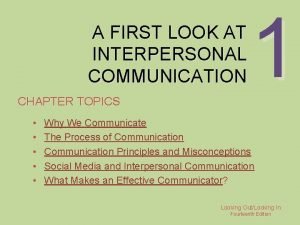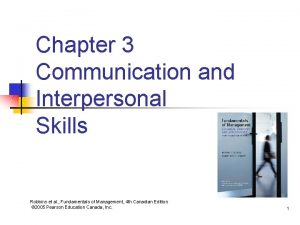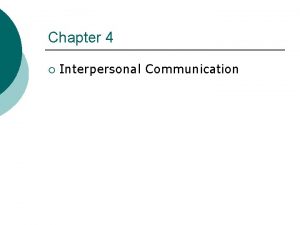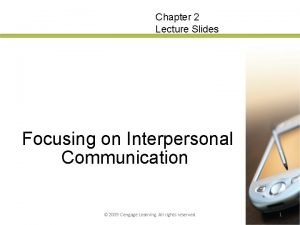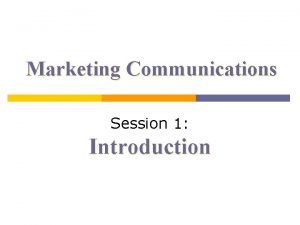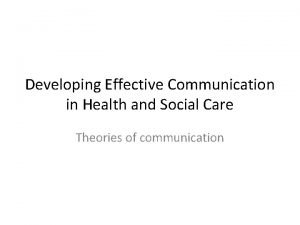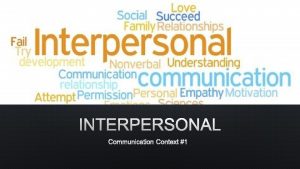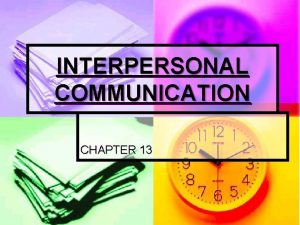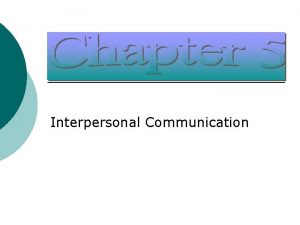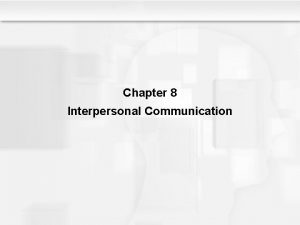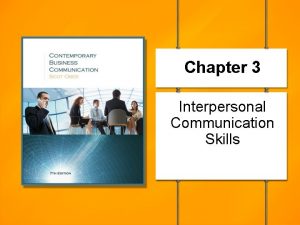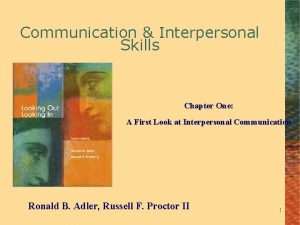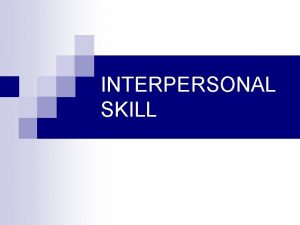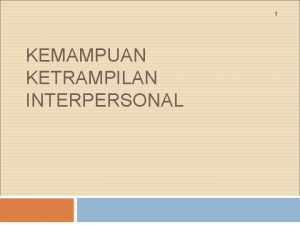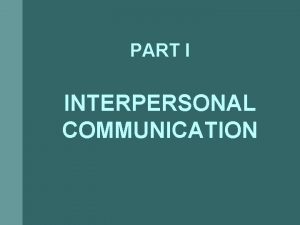Chapter One A FIRST LOOK AT INTERPERSONAL COMMUNICATION













- Slides: 13

Chapter One A FIRST LOOK AT INTERPERSONAL COMMUNICATION

Physical Needs Identity Needs Social Needs Practical Goals Why do we Communicate?

Self- Actualization Self-Esteem Social Needs Safety Needs Physical Needs Maslow’s Hierarchy of Needs

Linear View pg. 9 Noise Sender Message Channel(s) Noise Receiver Channel(s) Noise Linear View Process of Communication Noise

Transactional View pg. 10 Noise Channels Sender/Receiver Message/ Feedback Sender/Receiver Channels Noise Transactional View Process of Communication Noise

Transactional View focuses on relational communication (i. e. Don’t talk ‘To’ someone, talk ‘with’ someone) Dancing Analogy Transactional View

Communication Intrapersonal Internal Dialogue Self Talk Interpersonal Impersonal Intrapersonal Communication Interpersonal Communication Figure it out? Metacommunication Types of Communication Personal

�Quantitative: Any interaction between two people (dyad), usually face to face. AKA ‘dyadic communication’ �Qualitative: Occurs when people treat one another as unique individuals, regardless of the context in which the interaction occurs or the number of people involved (quite rare due to amount of effort required) Two Views of Interpersonal Communication

1. 2. 3. 4. 5. Communication can be Intentional or Unintentional Communication is Irreversible It’s Impossible Not to Communicate Communication is Unrepeatable Communication has a Content and a Relational Dimension Communication Principles

1. 2. 3. 4. 5. More Communication is Not Always Better Meanings are Not in Words Successful Communication Doesn’t Always Involve a Shared Understanding No Single Person or Event Causes Another’s Reaction Communication Will Not Solve All Problems Communication Misconceptions

Communication Competence Desire Ourselves Partner Motivation Knowledge Goal Oriented Action Skill Situation Communication Apprehension Process Topic Tools

Choose their actions from a wide range of possible behaviors 2. Choose the most appropriate behavior for the situation 3. Perform the desired behavior • See figure 1. 3 pg. 31 (Beginning awareness, Awkward, Consciously skilled, Integrated) 1. Competent Communicators will be able to:

Look at the issue from all sides using cognitive complexity 5. Have empathy 6. Be Self-Monitoring 7. Be Committed 4. Competent Communicators will be able to:
 Look left right
Look left right Impersonal communication
Impersonal communication Intrapersonal communication vs interpersonal communication
Intrapersonal communication vs interpersonal communication 6 interpersonal skills
6 interpersonal skills Chapter 5 interpersonal communication
Chapter 5 interpersonal communication Chapter 3 communication skills
Chapter 3 communication skills Interpersonal communication noise
Interpersonal communication noise What is interpersonal communication
What is interpersonal communication Interpersonal communication chapter 6
Interpersonal communication chapter 6 Chapter 8 interpersonal communication
Chapter 8 interpersonal communication Interpersonal communication chapter 2
Interpersonal communication chapter 2 One voice one look
One voice one look Argyle's communication cycle
Argyle's communication cycle Look at the image in activity 1
Look at the image in activity 1

